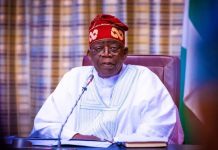Money market rates eased slightly on Wednesday despite persistent liquidity challenges in Nigeria’s financial system. Short-term benchmark interest rates dipped as banks continued borrowing heavily from the Central Bank of Nigeria’s (CBN) Standing Lending Facility (SLF).
Smaller banks remain reliant on the SLF for funding, while cash-rich lenders have taken advantage of the Standing Deposit Facility (SDF) to park excess liquidity.
Mixed Trends in Market Rates
According to data from the FMDQ platform, the Nigerian Interbank Offered Rate (NIBOR) displayed mixed movements across various maturities. The open buy-back (OBB) rate fell by 20 basis points to 32.13%, while the overnight lending rate declined by 8 basis points to 32.67%, reflecting the absence of significant inflows.
System liquidity remains in deficit, though there was some temporary relief from statutory revenue inflows, according to a note by AIICO Capital Limited.
Liquidity Deficit Expands
Despite easing interest rates, the banking system’s liquidity deficit widened further due to funding pressures from federal government bond auction settlements, foreign exchange (FX) intervention settlements, and Cash Reserve Ratio (CRR) debits.
On Wednesday, debits totalling N263.21 billion for bond auction settlements pushed the system’s liquidity deficit up by 13%, opening at N1.02 trillion, according to TrustBanc Financial Group.
Outlook on Liquidity and Rates
Market analysts anticipate further liquidity boosts from maturing instruments as the year-end approaches, though deficits are expected to persist in the near term. Funding rates are projected to remain elevated above 30% as the financial system navigates tight liquidity conditions.
With fewer primary market auctions anticipated in the coming weeks, financial market stakeholders are closely monitoring developments in statutory revenue inflows and the CBN’s monetary interventions to assess the impact on money market dynamics.














